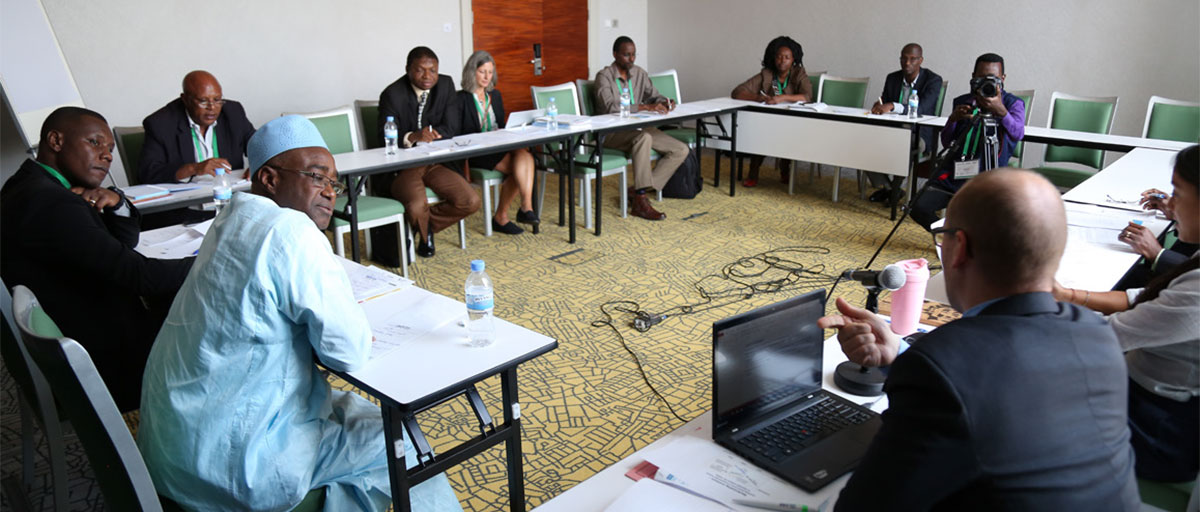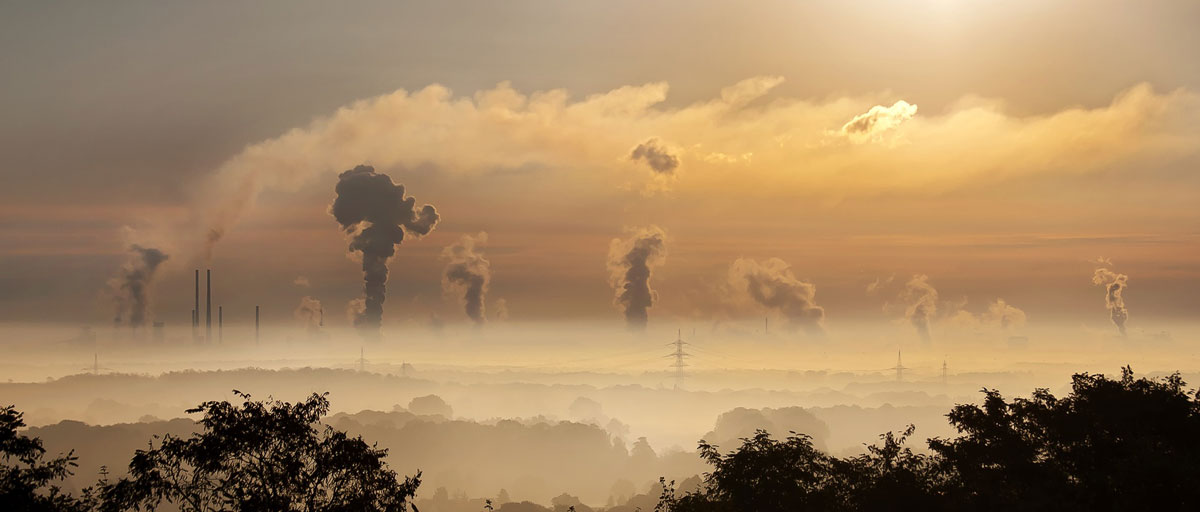Bildtext får vara max två rader text. Hela texten ska högerjusteras om den bara ska innehålla fotobyline! Photo: B. Christensen/Azote
climate change
Perspectives on the Intergovernmental Panel on Climate Change 1.5C report
Resilience framework is central to the new report, with strong linkages to centre research
- The IPCC report goes further than previous reports to frame climate within the broader context of sustainable development and planetary stewardship
- The impacts on societies and ecosystems will be significantly more severe at 2°C than 1.5°C, indicating that 2°C may no longer be considered “safe” for societal development
- The report confirms several research findings from the centre, including tipping points in the Arctic, threats to the Amazon rainforest from tax havens and risks of Earth entering “Hothouse Earth” conditions
The recently published 1.5°C report from the Intergovernmental Panel on Climate Change (IPCC), puts resilience of societies and Earth’s ecosystems at the heart of climate adaptation and mitigation.
First, the impacts on societies and ecosystems will be significantly more severe at 2°C than 1.5°C, indicating that 2°C may no longer be considered “safe”:
The landmark report goes further than previous IPCC reports to frame climate within the broader context of sustainable development and planetary stewardship – an approach welcomed by the Stockholm Resilience Centre, the Global Resilience Partnership and our related programmes.
The report provides two important insights.
First, the impacts on societies and ecosystems will be significantly more severe at 2°C than 1.5°C, indicating that 2°C may no longer be considered “safe”:
• The world risks destabilizing ice sheets on Greenland and Antarctica. According to the report, “instabilities could be triggered around 1.5°C to 2°C of global warming”.
• Even at 1.5°C some ecosystems such as warm water corals are likely to cross tipping points and their areas shrink significantly. At 1.5°C, coral reefs are projected to decline 70–90% with larger losses (>99%) at 2°C.
• Impacts on people’s health, livelihoods, food security, water supply, human security, and economic growth are projected to increase with global warming of 1.5°C and increase further with 2°C. Limiting global warming to 1.5°C is expected to reduce the number of people in poverty by up to several hundred million by 2050, and to reduce the number of people globally exposed to water stress by 50%
• At 2°C, ecosystems on 13% of Earth’s land are projected to “undergo a transformation” from one type to another.
• Limiting global warming to 1.5°C rather than 2°C could prevent permafrost thawing over an area the size of Greenland (1.5 to 2.5 million km2)
• The report calls for climate-resilient development that strengthens sustainable development and poverty eradication poverty by transformation and ambitious changes in mitigation, adaptation, and climate resilience.
The report catalogues many long-term benefits of climate stability at 1.5°C, and how actions to meet this goal will support achievement of several other Sustainable Development Goals.
The new IPCC report shows the door is still open to meet the 1,5 target, but the actions needed requires urgent transformative societal change, and we will need to build resilience to deal with an unstable climate system also when this target is met
Line Gordon, director of the Stockholm Resilience Centre
Links to centre research
It also confirms several research findings and dialogues coming from the centre. This includes recent analyses of future marine conflicts, transboundary climate risks, and high-level dialogues in regions under climate, ecological and social stress.
Additional important work includes the Artctic Resilience Report from 2016. It warned that that Arctic ecosystems are fundamentally threatened by climate change and other impacts of human activities. It identified 19 tipping points (or “regime shifts”) that can and have occurred in Arctic marine, freshwater and terrestrial ecosystems. The centre has also developed a database over different types of social-ecological regime shifts that have been documented worlwide.
More recent studies from the centre highlight relevant options to lever transformation, for example connections between tax havens and resource degradation in the Amazon rainforest, a critical carbon sink that helps stabilize the climate.
Centre researchers also recently showed that beyond 2°C, there is a risk of cascading events leading to an irreversible pull towards what the scientists call “Hothouse Earth” conditions. A “Hothouse Earth” climate will in the long term stabilize at a global average of 4-5°C higher than pre-industrial temperatures.
As temperatures continue to rise, this brings increased security threats relating to droughts and crop failures potentially contributing to political instabilities.
The centre is partnering with the Stockholm Environment Institute, Stockholm International Peace Research Institute and Stockholm International Water Institute to create a new Swedish initiative to highlight climate-security links. The Stockholm Climate Security Hub, will provide science based support for managing climate-related security risks and is supported by the Swedish Ministry of Foreign Affairs and builds on the complementary strengths of the three institutions.
“The door is still open"
The second major insight is that the IPCC report estimates that there is a larger carbon budget associated with the 1.5°C target than previously assessed by the IPCC. That is, the world can emit more carbon for the same probability of stabilizing climate at 1.5°C.
However, the authors acknowledge major uncertainties in how Earth system processes, for example melting permafrost, will respond to warming this century, which could reduce the budget. The most pessimistic estimates give the world less than a decade at current emissions rates, more optimistic scenarios in the report indicate that if emissions fall 45% by 2030 (from 2010 levels), then the world could be on course to stabilize temperatures around 1.5°C, though with just a 66% chance of success and requiring significant scale up of carbon capture and storage.
The report cites research from the centre published in 2017 suggesting that halving emissions every decade is consistent with the Paris Agreement on climate – a trajectory called the Carbon Law. The report confirms this trajectory is now technically feasible, but political will is missing. Current commitments from nations means global greenhouse gas emissions may not peak until 2030.
The recently published an Exponential Climate Action Roadmap charts out the scale of change across all economic sectors to halve emissions by 2030. Beyond wind and solar power, this means dietary shifts to reduce meat and dairy consumption, tackling food waste and adopting circular business models at global scales. This work is further supported by a new analysis on developing a more sustainable global food system showing the needed shifts in diets, food production technologies and management practices and reduction of food waste nessesary to stay within the planetary boundaries for food. A forthcoming EAT-Lancet commission will provide further scientific assessment of whether a global transformation to a sustainable food systems is possible, and what implications it might have for attaining the Sustainable Development Goals and the Paris Climate Agreement.
"The new IPCC report shows the door is still open to meet the 1,5 target, but the actions needed requires urgent transformative societal change, and we will need to build resilience to deal with an unstable climate system also when this target is met,” says Line Gordon, director of the Stockholm Resilience Centre.
"The IPCC report highlights the systemic nature of the challenge. We can’t simply take action on one problem. Solving the climate problem needs a holistic and systemic approach and one which involves radical and transformative solutions,” says Deon Nel, CEO of the Global Resilience Partnership (GRP) whose secretariat is hosted by the Stockholm Resilience Centre.
SRC and its partners increasingly show that the capacity to persist, adapt and transform in the face of change, is a fundamental prerequisite for sustainable development and achieving a sustainable and prosperous futures for all.














